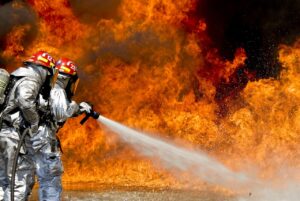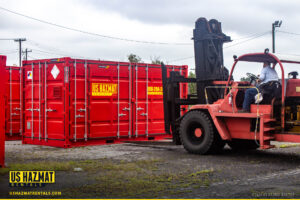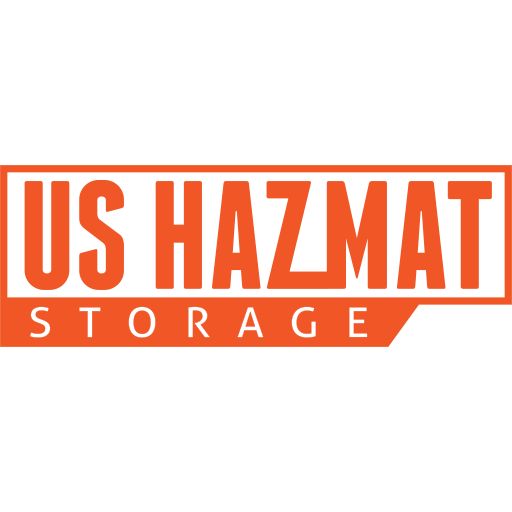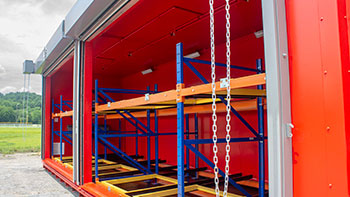Hazardous chemicals require constant monitoring and danger mitigation. Project managers and safety engineers must also stay abreast of changing federal chemical storage regulations for lasting compliance. Failure to abide by OSHA safety standards could lead to workplace accidents and residual fines long after hazmat crews clear the area. Natural disasters, like hurricanes, floods, and tornadoes, increases the risks for chemical spills and fires as emergency evacuation orders will leave dangerous stockpiles of hazardous materials unattended while employees scramble for safety. Despite what conspiracy theorists might tell you, we can’t control the weather, but we can mitigate its worst effects. Although materials segregation and fire-rated protection is sufficient for routine operations, chemical storage for natural disasters provides continuous protection for all life’s storms.
Floodwaters Can Dislodge Hazardous Material Stockpiles

Pollution and toxic releases are common during floods from hurricanes. Quickly rushing deluges of water and debris can jostle houses and businesses from their foundations before smashing the otherwise stable structures into bridges and barricades. The same torrents that reduce opulent homes to water soaked piles of debris can also wreak havoc on large flammable materials stockpiles. Once freed from compromised manufacturing facilities, floating canisters of petroleum, propane, fertilizers, and disinfectants can pervasively swarm swamped communities and towns where the hazardous materials can become punctured by other submerged debris. One errant spark from inadvertent contact between chemical drums and debris can ignite escaping hazardous materials, creating a dangerous conflagration and compounding ongoing rescue operations.
Why Chemical Storage for Natural Disasters Matters

Long vacated by staff seeking refuge from approaching storms, factories, shipyards, and other heavy industries are vulnerable to rushing floodwaters and fires from downed powerlines. With hazard response teams putting other fires citywide, compromised chemical stockpiles can unleash hazardous materials on populations clinging for life in surrounding communities. Electricity is almost always the first utility to go offline, neutralizing remote shut-off valves on punctured pipelines and silos, priming the desolation for further catastrophe. Without power or an emergency back-up generator, normally stable chemical payloads can also degrade or surpass their flashpoints in the absence of climate control. Our fire-rated hazardous materials warehouses can safeguard large chemical stockpiles during and after natural disasters. With the average fire-rated locker weighing more than 20,000 pounds, our chemical storage warehouses can weather any storm, giving much needed peace of mind to facility operators and nearby residents. Standard bottom-affixed sump containment systems will also prevent spilt materials within the locker from escaping into the environment. Contact us today for a free quote and consultation!


